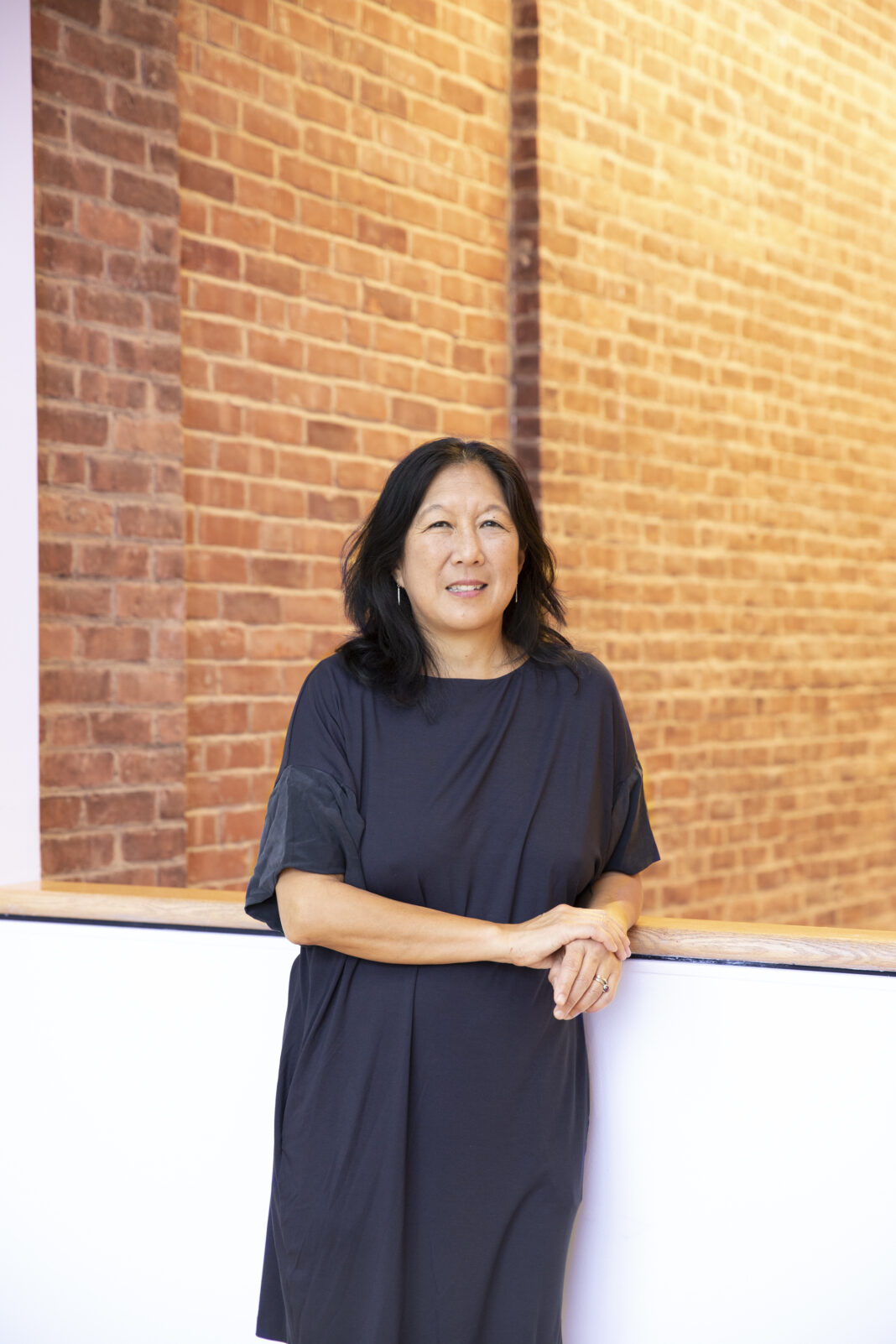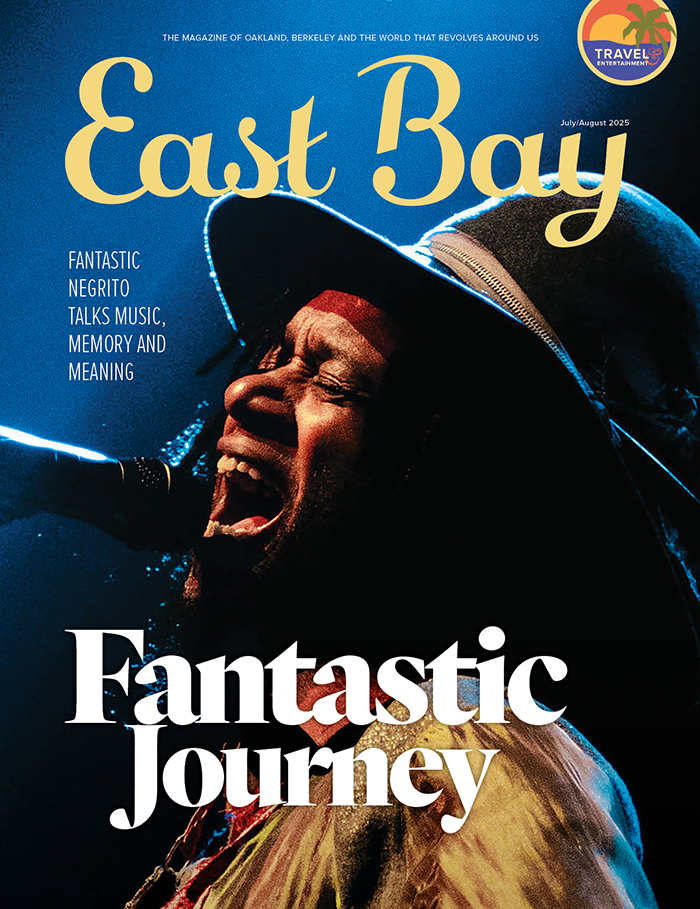BAMPFA’s new Chief Curator Christina Yang
Anchored for a mere 18 days in her position as the newly-appointed chief curator at UC Berkeley Art Museum and Pacific Film Archive, Christina Yang offers weighty resistance.
During a lively, 50-minute phone interview in early December 2021, I try to budge her off the shelf of “that’s to be determined in the months to come” and “I just landed here” protests. Consistently, politely, firmly—and alway presented with solid rationale—Yang refuses to fling projections about exhibits. She declines my invitations to predict or prognosticate about specific directions she intends to pursue while leading the staff, campus faculty and students, visitors and collaborative partner organizations in the Bay Area and nationwide into and through a period most experts and scholars in the field say is a time of reckoning for large art institutions.
Typically, an interview with this level of pushback leaves me frustrated and floundering for a convincing “hook” upon which to compose an article. In this case, I like Yang’s powerful pushback. It becomes the storyline; in part because she keeps it up for the entire time we talk, bandying her way out of corners and convincing me she means what she says at the start of our conversation:
“I actually don’t yet have enough information to put out what I’ll be proposing,” she says. “The work I do is based on listening to our community and listening to the internal work culture. I need to understand how this body functions. We are in a time where the work of a curator isn’t just researching artists and taking care of artifacts, but also taking care of staffing, art and budget parameters, hiring practices, equitable payment, the interests and needs of the larger community. Yes, it’s expanding the canon and uplifting under-recognized artists and countering injustice and more, but these actions must reflect our internal culture. I see my role as not just leading, but also uplifting and nurturing a staff of curatorial thinkers.”
Undoubtedly, Yang will make her imprint on BAMPFA’s exhibitions, collections and public programs. Her most recent position, as deputy director of engagement and curator of education at Williams College Museum of Art, followed a 14-year term at the Solomon R. Guggenheim Museum in New York City and positions at the Kitchen and the Queens Museum.
Williams College, like UC Berkeley, is a premier teaching institution, and Yang’s influence was broadcast widely in 2020 to include a digital initiative that connected audiences with the museum during the Covid lockdown and with Resist COVID / Take 6!, an installation of a national public-health campaign by artist Carrie Mae Weems that sought to raise awareness of the pandemic’s disproportionate impact on marginalized communities. Yang created a new undergraduate internship focused on racial and social justice at Williams College, an endeavor extending her previous accomplishments at the Guggenheim, where her curation introduced multidisciplinary works, symposia, films, literature and performances. At the Guggenheim, Yang established her signature style with collaborations featuring unusual genre crossovers, solo-artist exhibits and retrospective-born-anew projects involving artists such as Lenka Clayton and Jon Rubin, Joan Jonas, Shaun Leonardo, Public Movement, Yoko Ono, Christopher Wool, Tania Bruguera and others.
Yang’s appointment marks a return: she attended UC Berkeley for undergraduate studies in history and art history, and interned at BAMPFA. Recognized as a scholar, educator, administrator and innovator—especially in the realm of performance studies—Yang is a performance studies Ph.D. candidate at NYU’s Tisch School of the Arts. She will defend her dissertation, Performance and The Gaze: Spectatorship in The Kitchen Archive, 1974–84, in 2022.
Simultaneously, and with stated conviction—if any person can put forth a convincing statement, it is she—Yang says repeatedly that her first order of work is to listen, followed swiftly by building a collaborative team that is organic and includes at least four other curators, among other positions. “About 75% of the pieces you see that represent just 25% of an exhibition are the backstories of the art, of these people [staff] and their work, of the lives of the actual artists,” she says.
Her work history, she suggests, can be divided into two halves that in this new position form into one whole. There is the traditional curatorial work done with artists: Yang and her staff selecting artists, identifying and choosing artwork and themes, considering space and design configurations, planning and obtaining the additional materials to display, brainstorming with artists and the community at large to determine programs and address accessibility, and providing an immersive experience with room for feedback. There is also the gridiron framework of an exhibit: crafting an object and experience in such a way that a person entering the museum to see the exhibit leaves forever changed means focusing on internal protocols, audience encounters from arrival at the admissions front desk to departure, ticket price and more.
I ask Yang if a third component layered upon the multiple tasks at BAMPFA is adding scholarship, or knowledge-making. Yang agrees, saying, “It’s a three-prong approach that has a human piece that’s vital along with my longer legacy of documenting and producing knowledge, books, publications, exhibitions. I’m excited to be sustaining the work on all three levels. I’m focused on emerging trends, whether it’s social media, new artists and other areas. I’m paying attention to a generation of creative practitioners who think of the entire social ecosystem as their media.”
Hmmm, I think … then decide to risk more pushback by asking what this statement means and what it might cause to happen at BAMPFA. Especially with so many people shifting to online interactions, will museum encounters become a hybrid—or even primarily virtual—experience?
“Around the areas of technology and digital ways of communicating and documentation, from my background in digital media, I’ll say we’ve had this sort of thing since the 1970s,” Yang says. “But, post-Covid, the change is about being comfortable in social, live situations. People want to be together, and being together live has so much more to offer than the digital presentation. People know that, and my overriding feeling is we work with objects, artists and the public. It’s our responsibility to provide that experience in whatever media we have.”
I’ve learned a thing or two from Yang and press on, encouraging her to expound without forecasting the framework for her answers. I’m hoping for a glimpse into her deeper, core philosophies. Happily, she delivers.
“I was fortunate to attend Cal Berkeley,” she says, “so the ideas I was exposed to around feminism, critical theory, cultural studies, politics, labor, spectatorship, gender, race—they were concepts that, for me, solidified in the context of this museum. In this space of learning and looking I came away with the idea of being a curator. Coming back, I want to offer that same engagement, wonder, learning, knowledge-making and an experience that honors the trust of visitors by offering low-barrier entry in terms of price, but also accessibility, the human interaction, making people feel safe, as well as easy to park.”
Easy parking is only the beginning, I soon discover. “We have a strong education engagement department at BAMPFA; that means we are tied to faculty and places on campus like Cal Performances and other museums,” Yang says. “I want students to feel this is their museum, that they remember an artist’s talk, [that they] came to a cool opening, saw a great performance. From there, I feel generations of students will feel good about the institution and will want to come back.”
Principles she learned during the pandemic and in other positions held long before Covid ravaged art museum attendance will inevitably be sculpted, in part, according to the practicalities of resources. “I function not in an open field, but within limitations,” Yang says. “That’s actually what I excel at: What is this frame I have to work within? Understanding what people need for survival, what they want from art and culture, and not complicating the artist experience is what I learned and want to hold onto.”
Asked how she intends to determine “what people need for survival” that includes art, she recalls visiting locations where students received vaccines to ask them questions aimed at understanding their most immediate needs. What she heard that rang true? “Art is essential to our intellectual, emotional and physical health,” she says. “Reducing the barriers that prevent people from art being part of what they need is what I want to focus on.”
Yang says she most looks forward to foraging in the richness of the Bay Area’s contemporary art scene. “There’s been a shift away from the materiality of painting and sculpture and more idea-based studies,” she says. “We’re thinking about new ways to interact with archives, about working collaboratively with smaller places like Creative Growth in Oakland [the nonprofit provides studios, gallery space and supplies to more than 150 artists with developmental, mental and physical disabilities] and investing in open-ended thinking by and about artists and curators.”
As we wrap up, Yang stretches her wings one last time to say she’s “definitely committed” to promoting multi-disciplinary programs with spoken-word performances, live works of dance, music and theater, and to new ways of using BAPFA’s galleries and spaces to showcase different kinds of artists. “I have a number of artists I’d love to bring, but I have to wait and see what makes sense and how I can balance the amazing, talented artists already known and working here with the lay of the land,” she says. “This is a collective voice, an intersection of different talents and ways of working.”
Yang, having long ago shattered glass ceilings as a woman holding high-level positions in a world traditionally dominated by men, no longer suffers the obligation to describe her footprints before the first steps are taken. Yet, within her resistance lies an undeniable outline, one the future BAMPFA appears most fortunate to have when it is curated by her open ears, wise eyes and keen mind.
A footnote arrives just as I’m about to beat the buzzer and push send to file the article with my editor: It occurs to me that the experience I had in conversation with Yang is a lot like what she hopes a visit to BAMPFA will become. I enter with expectations; have an intense, stimulating, mostly “other” encounter that travels unpredictably to fresh insights; and depart changed. I no longer want answers and predictions from Yang, I want to be surprised and trust that whatever she serves up is going to be good.











